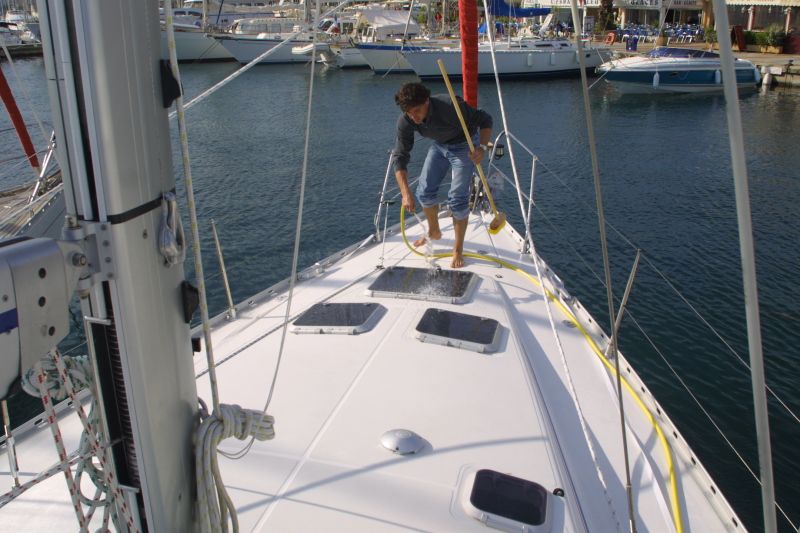Chandlery
-
See advice
Maintenance
Installed on the deck a hatch is subjected to weather and dirt. So that it keeps its transparency, minimal maintenance is required. First, after each trip, rinse with fresh water to remove salt. If the glace has micro-scratches you can remove them with the help of certain products (see plexi polish in the catalogue)as well as a little elbow grease.If the hatch has significant scratches, or internal micro-cracks(due to aging,)it is necessary to change the glass. On the panels with screw closing, never overtighten. Avoid grease on the joints, it holds dirt and forms a kind of glue with salt which damages the rubber. -
See advice
How to choose?
One can class pulleys in five families:
Bearing pulleys
Bearing pulleys are those which present the minimum of friction and permit a smooth and rapid rotation. Ideal? Yes, where rapid manoeuvres are essential and must be repeated often. This is the case, for example, with sails and spi movements but not for manoeuvres which must support static loads, for example a Genoa halyard or mainsail. Subjected to long, heavy loads, the bearings have a tendency to elongate.
Friction pulley
The friction pulley is the simplest to make. A sheave (plastic or composite material,) which turns on an axis (stainless steel or bronze.)Mechanically it withstands significant loads and can be used for every function. Its principal drawback is that it is not fast. It must therefore be reserved for static manoeuvres, in which the strength is more important than the speed (halyard, topping -
See advice
Diameter and materials
It may be necessary for practical reasons to install blocks (return manoeuvres, unfurling rope…) or simply to replace existing models. The choice should always be determined by the cordage diameter. A block is always used for a minimum and maximum diameter of rope, or for minimum, recommended, maximum. For example 6 to 10 mm or 6, 8, 10mm. Every time, a maximum workload is also given (e.g.500kg.) Recently, certain blocks have been created for specified materials (Kevlar ® aramid ®...) which have a tendency to slip in standard blocks. When one installs a block, it is necessary to take a model for the diameter of rope. For example, for cord of 10mm, one takes a model suited for 8 to 12mm. The workload is more
difficult to estimate. Fortunately, it is often dependent on the diameter of the rope.
For halyards on a cruiser from 10 to 15 m, the recommended load is 1000 kg (blocks 8-14 mm), on -
See advice
Changing a winch
It may be necessary to changer, or add an additional winch, for specific manoeuvres such as the spi. The first point to consider when installing a new model is the operation to be performed, taking into account the sail area and the type of navigation (racing or cruising.)Choosing a winch
The following table provides for the manual models, the appropriate winch, according to boat length and sail area. Of course, this is just a recommendation, you may prefer to take a larger size. We do however, recommend that you do not choose the size below. -
See advice
Reel, furling system or drum?
To begin with the reel appears to more easily facilitate reducing sail. Finished changing on the bow when the wind rises, simply roll whilst staying in the cockpit. The system is limited though, once rolled the Genoa forms a large pocket. Too low it becomes too powerful. Thus emerged the staysails (often also on a reel.)When the wind picks up one rolls up the Genoa and unrolls the staysail, smaller and flatter. It is a very good solution. The roller no longer becomes the storing system of the sail. Either it is rolled or the opposite; one system all or nothing. Thus the furling system was born which doesn’t permit the intermediate position but which remains in position. Finally, one may carry supplementary sails (principally downwind.)It is simple to carry them furled and simply release them when needed.


